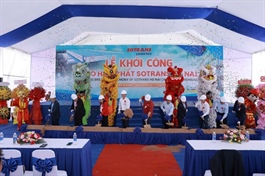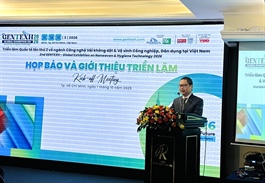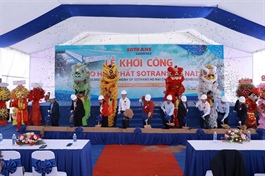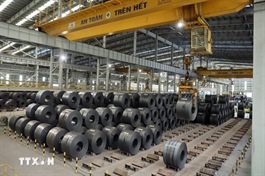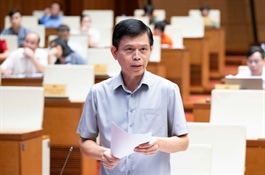Innovation strategies rise over all levels
Innovation strategies rise over all levels
Global tech firms are deepening research and development as well as investment in talent for fields such as semiconductors and AI, signalling strong potential for high-tech growth.
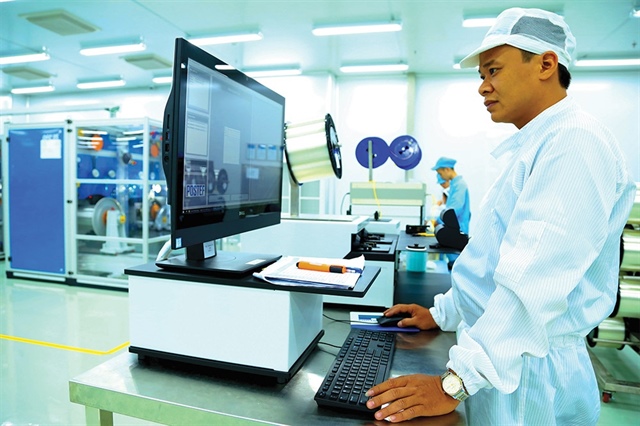
New innovative models aim to build useful datasets suitable for Vietnamese use, Photo: Le Toan |
At a forum on innovation and strategic technologies last week in Hanoi, Permanent Deputy Minister of Science and Technology Vu Hai Quan stated that technology is reshaping national power and global value chains. Therefore, Vietnam needs a new approach if it wants to rise amid intense competition.
He noted that Vietnam has identified key impediments, and declared that Vietnam must master technology to achieve rapid and sustainable development, while also strengthening national defence and security.
The prime minister has already issued a list of nearly a dozen strategic technology groups and 35 key product categories, including AI, semiconductors, blockchain, and robotics, to drive the development of priority sectors.
To implement this effectively and quickly, the Ministry of Science and Technology (MST) is developing strategic technology schemes by standardising foundational pillars, covering core technologies, infrastructure, and personnel. Each pillar clearly defines context and objectives, scope and methodology, expected outcomes, timelines, budgets, and evaluation criteria.
Then, tasks will be converted into research projects and initiatives to call for participation from enterprises, universities, research institutes, ministries, sectors, and localities. Gradually, based on the implementation of these technologies and strategic products, they will build an innovation ecosystem.
“The MST invites experts, scientists, businesses, institutions, especially innovation alliances, to advise on this implementation approach,” Quan said.
Technology enterprises, networks, and experts at the event shared their strategies to promote innovation and implement strategic technologies in Vietnam. Nguyen Van Khoa, CEO of FPT, emphasised that innovation is not bound by regulations or financial rules. It is the soul of development and an organisation’s most valuable intangible asset.
“In the most critical resolutions today, innovation is positioned as the core, nucleus, driver, not only at the national level but also within enterprises. It will become the DNA of an organisation and transform into a valuable culture,” he said.
Khoa noted that over 37 years of growth, FPT has made innovation a core value nurtured as a sustainable culture, starting from the smallest tasks. “In 2025, over 5,000 initiatives from FPT’s 84,000 employees across 30 countries have helped save nearly VND800 billion ($32 million) in operational costs. Many of these ideas came from operations, design, and sales teams,” he added.
To turn innovation into reality, Khoa argued that Vietnam must improve its legal framework for emerging sectors such as high-tech, logistics, and AI. “Many resolutions exist, but there is lack of concrete enforcement mechanisms, no specific laws or decrees to drive the vision. The government must act swiftly,” Khoa said.
Thieu Phuong Nam, CEO of Qualcomm Vietnam, Cambodia, and Laos, noted that the group has been in Vietnam for over 20 years and considers it a key hub. In June, the company inaugurated a research and development (R&D) centre in Hanoi, now one of its largest globally. The engineering team, entirely Vietnamese, is involved in cutting-edge projects whose products are used domestically and internationally.
“AI will change the way we interact with technology. This is an opportunity for Vietnam to participate more deeply in global value chains,” Nam stated.
In the AI field, the ViGen project has been launched through collaboration between Meta, the National Innovation Centre (NIC), and AI for Vietnam. It aims to build a Vietnamese language dataset covering levels from preschool to university.
According to Tran Viet Hung, co-founder of AI for Vietnam, it will generate a 50-billion-parameter dataset and five Vietnamese language evaluation sets to train AI models. “The major challenge is that Vietnamese is not naturally supported by international AI models. ViGen aims to fill this gap. It also encourages public data contributions, where each participant earns points that can be converted into tangible rewards,” he said.
In cybersecurity, Ngo Tuan Anh, chairman of the ViSecurity Network, introduced the Vietnam Open Cyber Range initiative, an open training platform involving universities, research institutes, and businesses.
“It is also open in its operation model, enabling institutions and cybersecurity enthusiasts to easily access and utilise it,” he said. “Our goal is to create a high-level training platform that addresses Vietnam’s demand for quality cybersecurity talent.”
Deputy Prime Minister Nguyen Chi Dung said that in the past month alone, Vietnam has launched three innovation networks in quantum technology, cybersecurity, and aerospace. Along with the previously established AI and semiconductor networks, these are hubs of collective intelligence, gathering top Vietnamese minds globally to tackle national, regional, and global challenges.
Meanwhile, Japanese partners, led by the Mitsubishi Research Institute, have pledged cooperation in startup incubation and tech workforce development in Vietnam. Qualcomm and Meta have committed to expanding R&D collaboration and supply chain development in the country.
A Vietnamese chip design startup, Hyphen Deux, incubated by the NIC and supported by the semiconductor innovation network, has gone global, with its control chips now manufactured by TSMC. “These are foundational steps and clear evidence of the strong commitment and concrete actions taken by Vietnam’s innovation ecosystem in recent times,” DPM Dung declared.
- 11:15 06/10/2025








